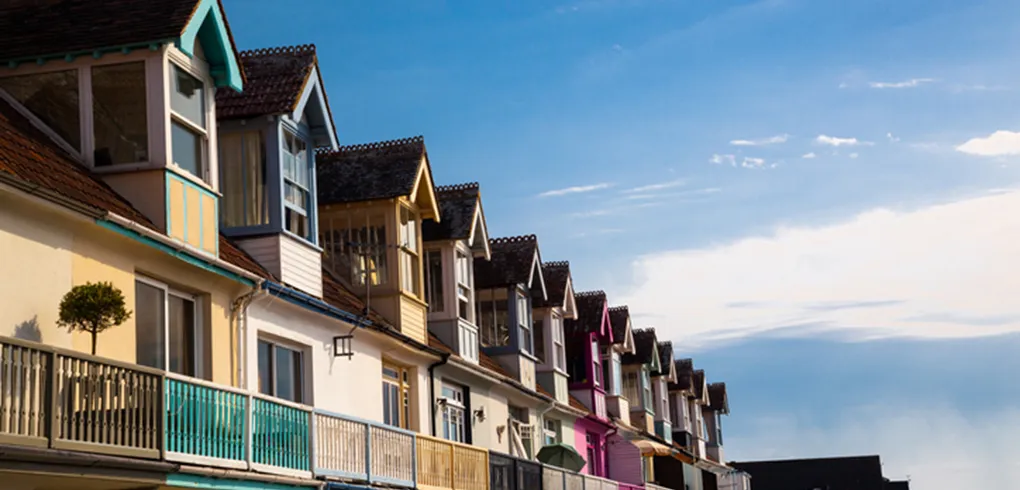
Government Mortgage Deposit Schemes
Here we go through the different government mortgage deposit schemes – from the Help to Buy Mortgage Guarantee Scheme to LISAs, Shared Ownership and more.
Getting on the property ladder can seem like a faraway dream if you’re stuck paying rent, especially with living costs forever rising and the price of properties always on the up. The best mortgage deals are available to those who have a deposit of 20% or more. Unfortunately, some may find this beyond their reach.
In recognition of the risk that current and future generations may not experience the benefits of owning their own home, the UK Government has various low deposit mortgage schemes that provide a helping hand with the mortgage deposit for your first home, even if you have saved as little as 5% mortgage deposit of the value of the property you’d like to buy. We summarise the different mortgage deposit schemes here, giving you all the details you need to weigh your options and make an informed decision about what could work for you.
Contents
Help to Buy: Mortgage Guarantee Scheme

One side effect of the economic downturn caused by the COVID-19 pandemic was the decrease in availability of 95% LTV (loan-to-value) mortgages. The mortgage guarantee scheme – also referred to as the 5% deposit mortgages government scheme – was introduced in the 2021 Budget with the aim of increasing the availability of mortgages requiring only a 5% deposit.
The scheme works by the Government offering mortgage lenders the option to buy a guarantee on 95% LTV mortgages and covers up to 80% of the value of the property. This lowers the risk of 5% deposit mortgages, as the lender will be compensated in the event of repossession. The scheme covers 95% of the net losses to the mortgage lender, ensuring that the risk is spread between the Government and the lender.
For the borrower, this means that you remain vulnerable to losing your property if you cannot keep up with your monthly repayments. You must still pass the usual eligibility and affordability tests required when applying for a mortgage. Interest rates for 95% LTV mortgages that fall under this scheme are set at the discretion of the lender.
The mortgage guarantee scheme is only available for properties up to a maximum purchase price of £600,000. It’s available both to first-time buyers as well as existing homeowners who wish to move.
Help to Buy: Equity Loan
The Help to Buy: Equity Loan scheme was launched in April 2021 and continued until March 2023 – to qualify, you had to make your reservation by the end of October 2022. If you had a minimum 5% deposit, the Government would have lent you up to 20% of the cost of your home – 40% in Greater London – which means you would only have needed a 75% LTV mortgage. The loan is interest-free for the first 5 years and needs to be repaid if you sell your property, or when the mortgage is repaid in full.
This scheme was aimed at first-time buyers and only for the purchase of new build homes in England, worth up to £600,000 in London. The maximum price was subject to lower regional price caps, down to £186,100 in the North East.
For example, if you were looking to buy a property worth £200,000, you’d have paid a minimum 5% deposit of £10,000. The equity loan could have been up to 20% – £40,000 – which would have left you with a 75% LTV mortgage of £150,000.
If you wished to reduce your mortgage size, you could have put in a larger deposit that is up to 65% of the value of the property. In the case of a £200,000 house, this means your deposit would have been £130,000. As the rules required the minimum mortgage to be 25% LTV, your mortgage would have been £50,000 and the equity loan for £20,000.
If you purchased your home using this scheme, it had to be used for your main residence. This means it couldn’t be used for a second home or as a buy-to-let property.
To participate in this scheme, you needed to ensure the developer or accredited broker set up your Help to Buy portal and that you made your reservation by October 2022.
Help to Build
The Help to Build Scheme works in a similar way to the Help to Buy Equity Loan, except it helps you build a property or convert a building that was previously used for commercial purposes into a residential property.
The Government offer you an equity loan based on the estimated costs to buy a plot of land and build a home – or buy a commercial building and convert it.
The equity loan can be between 5% and 20% or up to 40% in London of the total estimated costs. You can spend up to £400,000 on building your home and up to £600,000 if you don’t already own the land.
You’ll typically need at least 5% in deposit to qualify for Help to Build.
Lifetime Individual Savings Account
The Lifetime Individual Savings account (LISA) is designed to help you save up for a mortgage deposit, or alternatively to save for retirement. LISAs are offered by both banks and building societies. You can pay in up to £4,000 annually until you’re 50 and the first payment must be made before you’re 40. The Government will add a 25% bonus per year, at a maximum of £1,000.
LISAs can only be used by first-time buyers to purchase a property and the value can be no more than £450,000. As LISAs are based on the individual, you can pool your LISA with another first-time buyer to increase your deposit size. The scheme is only available for the purchase of a main residence – not a buy-to-let or second home – or for retirement. Also, you must use a traditional repayment mortgage.
The Help to Buy ISA scheme has been closed to new applicants since November 2019. However, you can transfer your existing funds into a LISA, although you won’t be able to top up your LISA by more than £4,000 per fiscal year. You should note that the Help to Buy ISA scheme will no longer pay out bonuses in 2030, so it makes sense to transfer to a LISA if you have a longer term savings plan.
Shared Ownership
While mortgage schemes help first-time buyers to get on the housing ladder, there are risks:
The Shared Ownership scheme is targeted at first-time buyers and lower-income households with a combined income of up to £80,000 per year, or £90,000 per year in London. Rather than take out a mortgage on the whole property, you buy a share from the landlord, who is typically the council or a housing association. You then pay a reduced rent on the remaining share. Usually, your share is between 10% and 75% of the property’s value.
Shared ownership also allows you to increase your share of the property, in increments as small as 1%, rising to 100% and full ownership at your own pace. Shared ownership properties must be leasehold-only. Mortgage lenders will typically require a 90% or 95% LTV, but some lenders offer 100% mortgages for shared ownership, meaning you may not have to save for a deposit at all.
People working in the military will be given priority in the Shared Ownership scheme funded by the Government. Local councils that also have shared ownership programmes have leeway to develop their own priorities for professions based on local housing needs.
If you’re aged 55 or over, there’s another scheme called Older People’s Shared Ownership.
It works in the same way as the overall Shared Ownership scheme, except there is an ownership cap of 75%. If you own 75% then there’s no rent imposed by the landlord.
Right to Buy
The Right to Buy scheme is aimed at council house or housing association tenants in England or Northern Ireland who wish to buy their property. The scheme offers a discount of £87,200 or £116,200 in London. This offers tenants the possibility of ascending the first rungs of the property ladder and owning an asset that is an investment for the future.
The Government’s Own Your Home website has a helpful page that outlines the 6 key steps in the Right to Buy process.
The First Homes Scheme
The First Homes scheme is a new Government policy – launched in 2022 – that provides new build homes to be available to first-time buyers in England at a discount of 30% of the market price. The scheme involves the building of new properties purposely to be sold at a discount. The discount can be increased to up to 50% in areas where property values are high.
If the buyer decides to sell their property down the line, the house will be independently valued and the discount on the new value will be made available to the next buyer. The scheme therefore ensures that designated properties are always sold below market price and can be an attractive option to first-time buyers.
The First Homes scheme is open to buyers from all professions, but local councils are given the power to prioritise discounted homes for essential workers, people who live in the area and those on lower incomes.
The first properties to fall under this scheme were launched in June 2021 in the West Midlands. There was a target of 1,500 First Homes being available by the end of that year across England on a site-by-site basis.
Get in touch with our experts
Book an appointment with an adviser today and we’ll help you work out which mortgage deal is best for you and your requirements.

